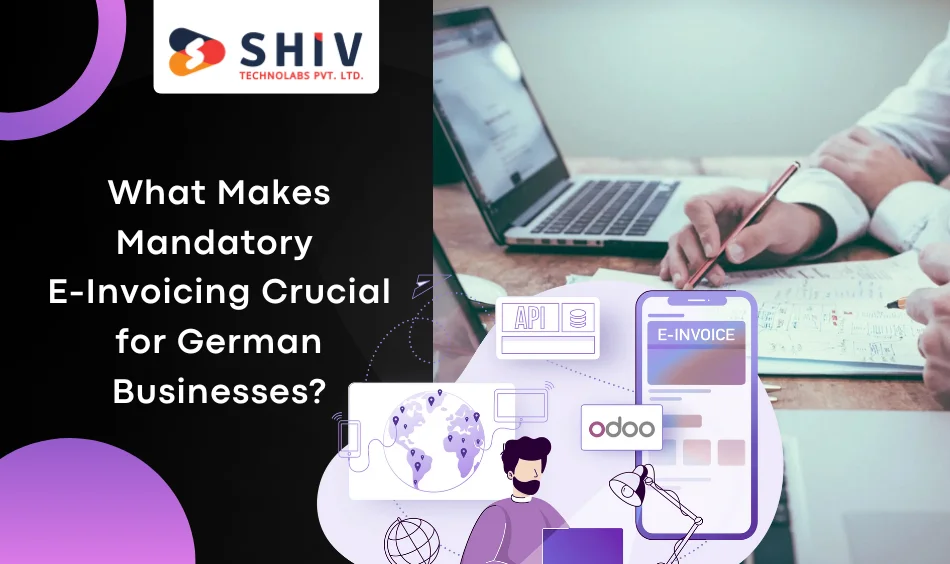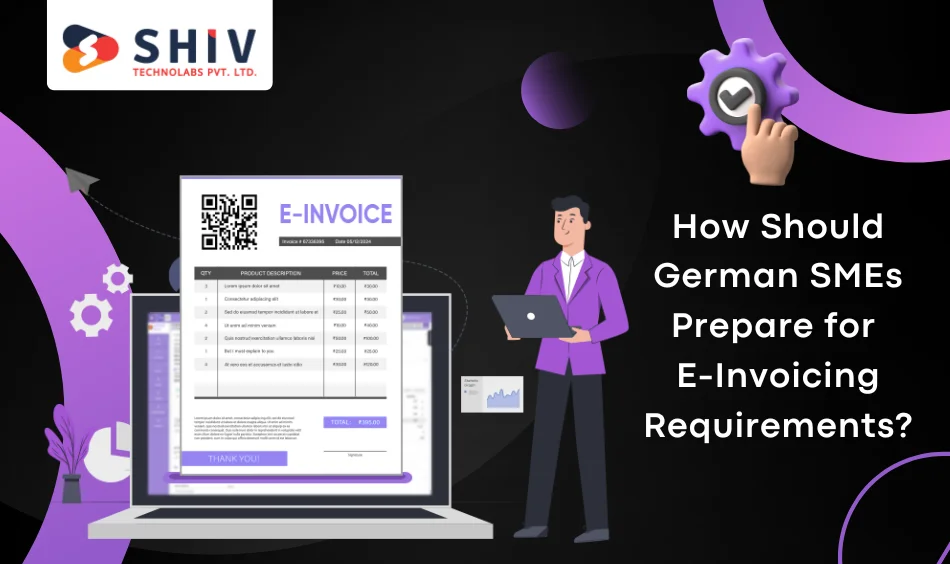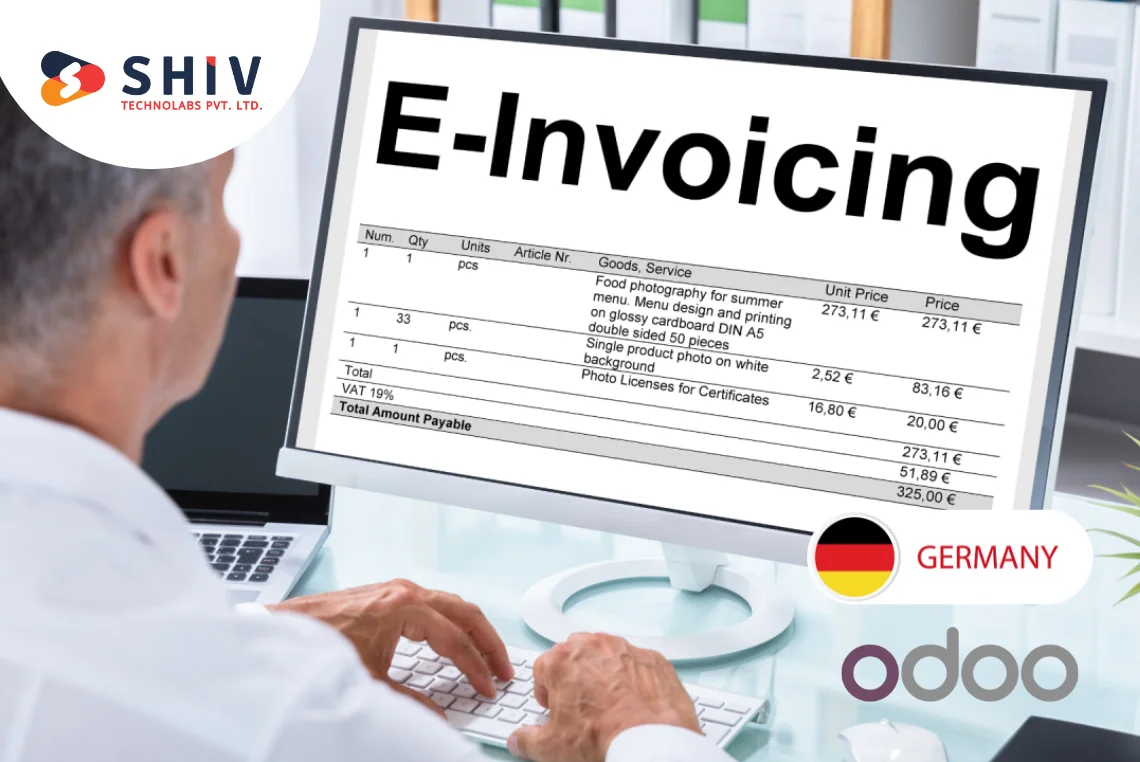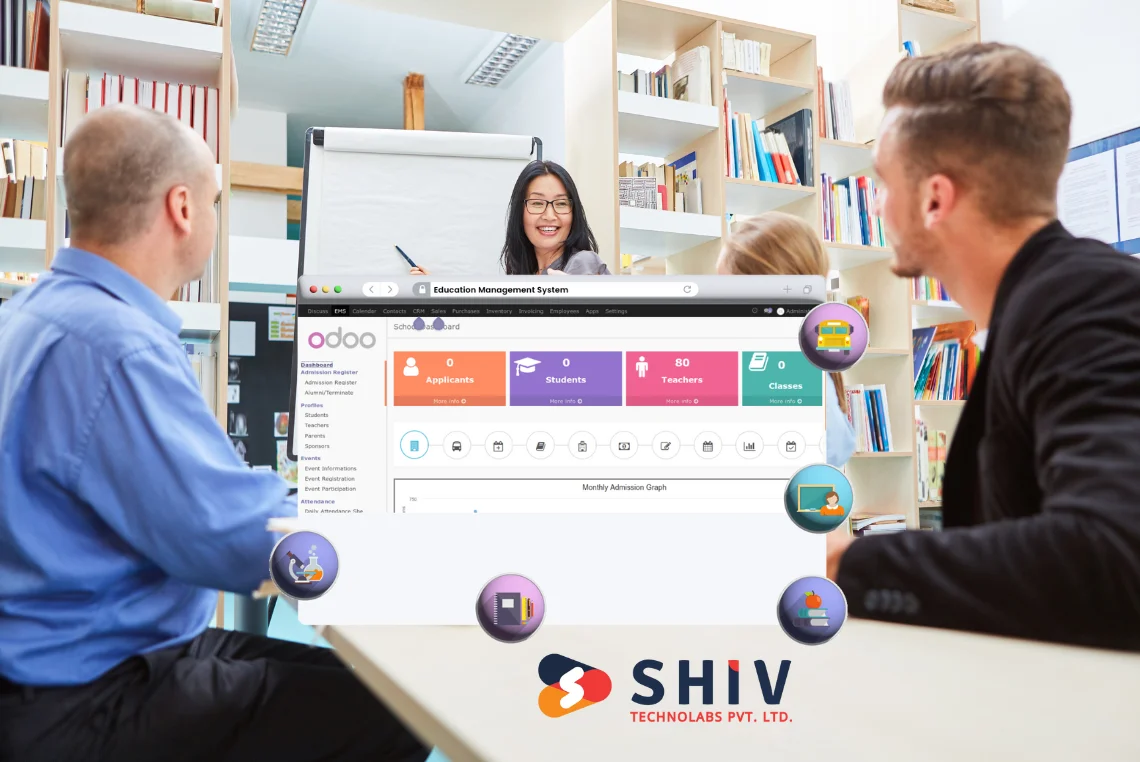Table of Contents
Germany is moving B2B billing from PDFs to structured e-invoices between 2025 and 2028 nationwide. Work with an Odoo partner in Germany to plan early, avoid rework, and keep finance steady. If you ask what e-invoicing is in Germany, think of invoices as validated data, not attachments.
Structured files carry tax fields in a form that systems can read and confirm quickly. Teams post entries faster, reduce disputes, and keep payment dates predictable during month-end pressure. This model supports Germany’s e-invoicing compliance by giving auditors a clear, traceable view of every calculation step.
Deadlines arrive in phases, so readiness matters as trading partners switch at different speeds. Early pilots reveal gaps in master data and VAT logic before larger rollouts start. Companies that act now avoid rushed cutovers and protect cash flow during seasonal peaks.
Odoo helps by producing structured files, applying German tax positions, and connecting through PEPPOL when buyers request it. Your staff keeps familiar approvals while systems create machine-readable output for portals and partner gateways. That mix reduces errors, shortens audits, and builds confidence across finance, tax, and IT. For connection work, see our Odoo integration services.
What Is E-Invoicing in Germany and Why Is It Changing?
German policy favors machine-readable invoices that support accurate VAT reporting and faster checks across the supply chain. The approach follows a wider European move toward shared data rules and common validation standards. Businesses benefit because systems match orders and receipts automatically and flag issues before posting.
Formats and core requirements
- XRechnung: XML schema widely used for B2G and growing B2B transactions across Germany.
- ZUGFeRD: Hybrid model combining a readable PDF with embedded XML for smoother transition periods.
- EN16931 standard: European data model defining fields, codes, and validation used by gateways.
- B2B invoice requirements: Structured data, correct VAT logic, supplier and buyer identifiers, and compliant retention.
In practice, your ERP maps master data to these schemas and generates the required XML file. Buyers validate fields automatically, post the entry, and return status without long email threads. With Odoo, you start small, fix data gaps, and then widen coverage as the mandate expands.
What Makes Mandatory E-Invoicing Crucial for German Businesses?

German mandates push companies to send and receive structured invoices instead of static PDFs across B2B trade. Your finance team posts faster, matches purchase orders cleanly, and reduces vendor disputes during month-end pressure. This shift strengthens Germany’s e-invoicing path with Odoo and gives leaders clearer, real-time cash visibility.
Standard fields remove retyping and cut delays from missing VAT details or supplier identifiers like USt-IdNr. AP and AR teams spot exceptions earlier, correct them quickly, and keep payment dates on track. These gains form the practical benefits of e-invoicing in Germany for day-to-day operations.
Automated checks flag gaps before posting, which lowers rejections from buyers and portals significantly. Auditors read tax logic directly in the XML file, so they finish reviews with fewer follow-ups. Clear line-level data also reduces credit notes created to fix small mistakes after submission.
Odoo supports this change with German localization, XML exports, and options for PEPPOL connections. Your staff keeps familiar approvals while sending structured invoices that match current standards consistently. You move now, then expand automation as partners and requirements grow over the next waves.
Benefits for companies
- Faster payments
- Fewer manual errors
- Better audit transparency
- Lower admin cost
What Are the Upcoming E-Invoicing Deadlines in Germany?
Germany will phase in e-invoicing, leading to full adoption by 2028 across industries. Treat 2025 as your reception year to test partners, adjust data, and train users. Use 2026 and 2027 to scale issuing, refine workflows, and finalize archives for audits confidently. Plan resourcing with how to prepare for the e-invoicing mandate in Germany in mind. If you need help, our Odoo implementation services can guide the rollout.
| Business Type | Timeline | Requirement |
|---|---|---|
| Large enterprises | 2025 | Mandatory structured e-invoices |
| SMEs | 2026–2027 | Progressive rollout |
| All companies | 2028 | Full compliance |
Begin with a system audit, master data cleanup, and XRechnung pilot for one buyer group. Confirm retention rules, produce test files, document playbooks, and schedule short refresher sessions. This staged plan lowers risk and keeps your teams confident ahead of the nationwide cutover.
How Odoo Supports Structured E-Invoicing in Germany
Odoo gives German teams a clear path for structured invoicing across AR and AP flows. The Odoo e-invoicing module for Germany maps tax rules, customer data, and invoice lines to standards without breaking approvals.
Users create an invoice as usual, pick customer terms, and apply German tax positions during posting. Odoo validates mandatory fields, builds the data model, and prepares an EN16931 XML file for delivery.
Odoo supports XRechnung and ZUGFeRD while partners migrate at different speeds across the coming years. You can add attachments, payment terms, and references, then post to a gateway or buyer portal.
PEPPOL connections move invoices through trusted channels and return delivery status to your dashboard in real time. If a gateway rejects a file, Odoo shows the code, links the record, and guides a quick correction.
Controls matter for audits, so Odoo records versions, timestamps, and user actions on every document. You manage roles, retention periods, and exports that meet local record-keeping and internal reviews. For post-go-live care, see Odoo support and maintenance.
Odoo e-invoice features
- Automated XRechnung export
- Digital signature support
- XML generation
- PEPPOL connection options
- Secure archiving
An implementation team starts with a sandbox, sample partners, and a short test catalogue for scenarios and volumes. They measure pass rates, fix mapping gaps, and publish a playbook covering exceptions, credit notes, and cancellations.
After go-live, you track first-time pass rate, days sales outstanding, and manual touch count across entities and months. Our team can run a configuration workshop and deliver a blueprint for your phased rollout this quarter.
Odoo also supports multi-company setups, so groups apply shared templates while honoring local VAT rules. Multi-currency rounding, language packs, and number ranges keep documents consistent across entities and markets during audits and closings.
You can send files through PEPPOL, SFTP, API connectors, or certified portals required by key buyers. Odoo feeds confirmations back to the invoice record, so staff see the status without switching between systems during daily work.
For rejections, Odoo stores validation messages, links to impacted fields, and helps users correct entries quickly. You can create rules that flag repeated issues, assign owners, and track resolution times for audits in reports.
Finance teams can attach order confirmations, delivery notes, and credit memos to keep threads complete. Those links help reviewers understand context fast and reply to partner questions with accurate details during audits.
Change management matters, so you train users with short videos, quick guides, and scenario drills. Weekly clinics collect questions, confirm fixes, and keep the rollout on schedule across departments during early phases.
Also Read: What German SMEs Should Look for in a Modern ERP And Where Odoo Fits Best
How Should German SMEs Prepare for E-Invoicing Requirements?

German SMEs face tight timelines and varied buyer demands during the switch to structured invoices. A simple plan reduces risk, keeps cash moving, and avoids last-minute fixes during peak periods. Begin now with small pilots, short training, and clear owners for data, testing, and support. Treat every rejection code as a signal to repair root data, not just the record.
Pick one buyer and one supplier with XRechnung experience and agree on concrete success measures. Use real samples, VAT edge cases, and delivery checks before widening coverage. In Odoo, set a test company, confirm tax positions, and connect a PEPPOL route. Keep decisions in a shared log so finance, tax, and IT move together and avoid repeated errors.
German SMEs e-invoicing compliance checklist
- Audit ERP version, add-ons, and custom code readiness.
- Clean VAT IDs, addresses, terms, and bank details.
- Map EN 16931 fields; record each buyer’s channel.
- Configure Odoo taxes, references, and number ranges.
- Build ten sample invoices; validate required fields.
- Connect PEPPOL or SFTP; capture delivery status centrally.
- Set retention periods, roles, and archive search routines.
- Train AP, AR, and sales on exceptions and credits.
- Publish playbooks for rejection codes and escalation paths.
- Schedule cutover windows, on-call support, and checkpoints.
Use this German SMEs e-invoicing compliance checklist as a weekly standup tool. Track pass rate, days sales outstanding, and manual touches against your baseline. Fix repeated issues through mapping or data cleansing, then expand partners. We can run a short readiness workshop and deliver a two-phase plan, including playbooks, training, and a measured timeline for your rollout.
What Is the Cost to Implement ERP-Based E-Invoicing in Germany?
Budgets vary by scope, data quality, and partner channels. The cost to implement e-invoicing in ERP depends on format mapping, integrations, and training. Plan discovery first, then confirm a pilot before any wide rollout.
Use the table below as a planning guide, not a final quote. Add buffers for data cleansing, testing, and user sessions. Track ROI from lower admin effort, fewer rejections, and faster payments.
| Company Size | Project Scope | Estimated Budget |
|---|---|---|
| Small business | Basic e-invoicing setup | €3,000–€8,000 |
| Mid-size | ERP + automation link | €10,000–€25,000 |
| Enterprise | End-to-end custom setup | €30,000+ |
Most firms recover costs through reduced manual entry and cleaner audits. Finance teams also gain clearer status, tighter cash dates, and fewer credit notes. If you need ERP scope beyond invoicing, review our Odoo ERP solution for SMEs.
Why Is Odoo a Smart Choice for Germany’s E-Invoicing Future?
Odoo delivers structured invoicing with German tax positions, XRechnung output, and PEPPOL options. It scales from single-entity setups to multi-company groups without heavy overhead or long change cycles.
As e-invoice software Germany buyers compare platforms, Odoo stands out on flexibility and total cost. You can add marketplace modules, tailor workflows, and run in cloud or on-prem models.
Teams keep familiar approvals while systems generate machine-readable XML for partner portals. That mix supports current demands and future rule changes with limited disruption.
FAQs About the Future of E-Invoicing in Germany With Odoo
When will mandatory e-invoicing start in Germany?
Reception starts in 2025, with phased issuing toward full adoption by 2028.
Does Odoo support XRechnung and ZUGFeRD formats?
Yes, Odoo supports structured XML and hybrid scenarios during the transition.
Can Odoo connect to PEPPOL for German e-invoicing?
Yes, you can send through PEPPOL and track delivery status inside Odoo.
What happens if my business ignores the rules?
You risk rejected invoices, compliance findings, and delays that impact cash.
Do small German businesses need to change ERP systems?
Not always; many can add Odoo-based flows or integrate targeted modules.
Is cloud ERP required for e-invoicing in Germany?
No; both cloud and on-prem setups can meet technical and retention needs.
Conclusion
Germany is moving to structured e-invoices, so the smartest move is to prepare now with a clear plan. Odoo delivers the standards, validations, and connections German buyers expect, while your teams keep familiar approval steps. With Shiv Technolabs as your implementation partner, you reduce risk, protect cash flow, and keep audits straightforward.
Start with a small pilot, verify XRechnung output, and add partners once pass rates hold for two weeks. Clean master data, confirm retention rules, and measure gains like lower rework, faster posting, and fewer credit notes. If you want practical guidance and a phased roadmap, our Odoo consulting services team can help today.
Schedule a discovery call, share your buyer list, and we will design a realistic timeline with clear owners. Together, we will pilot, review results weekly, and expand confidently across entities, channels, and trading partners. Your teams gain skills, and your invoices move right the first time.























